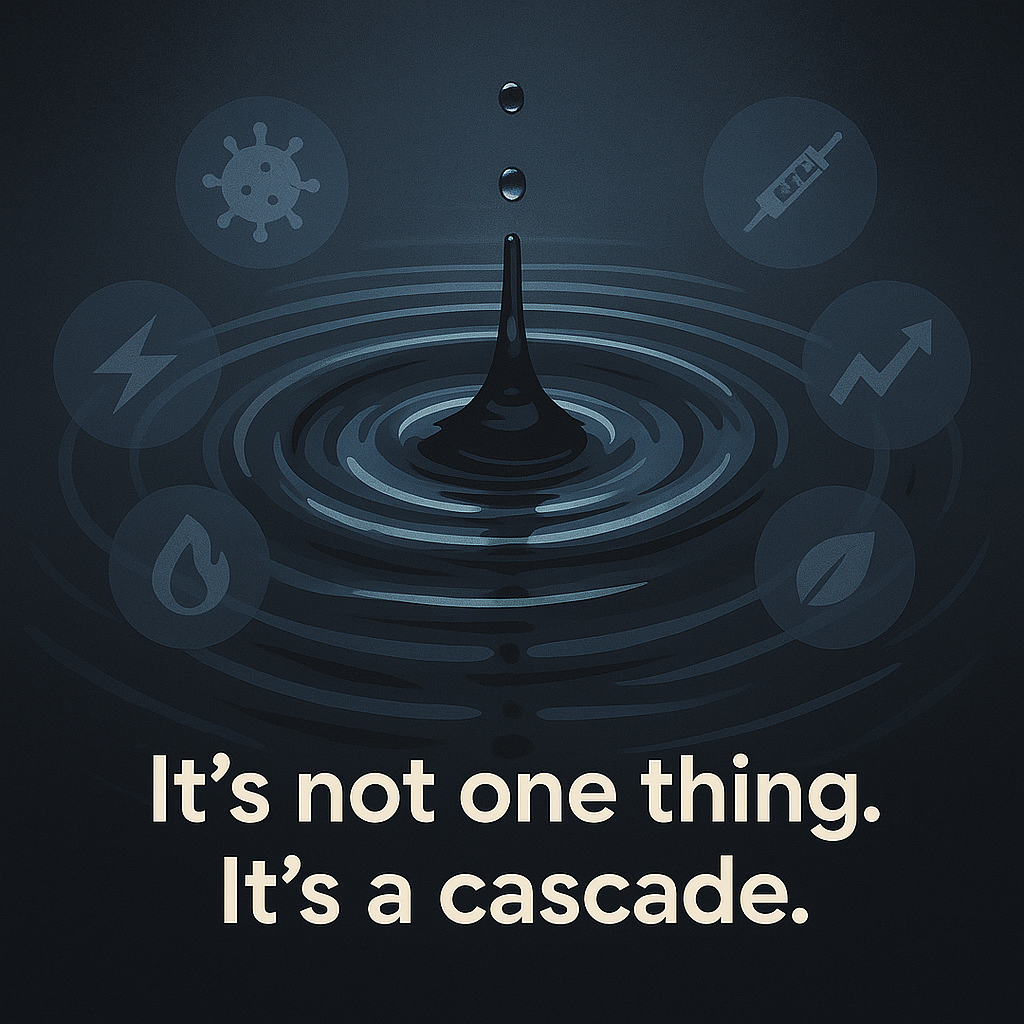A while ago – long enough that I can’t remember who sent it to me or when – I was given a document. It contained 68 studies, many published in the early 2000s, often cited by those who believe there’s a link between vaccines and autism.
At the time, I skimmed it. Then I set it aside.
Recently, while organizing old files for my current advocacy work, I came across it again. This time, with the help of my AI assistant Lila, I reviewed it – fully. Not with an agenda. Not with a conclusion. Just through the lens I’ve developed over 17 years: as a parent, a researcher, and someone who has lived this story from the inside out.
Let me be clear:
I’m not writing this to argue that “vaccines cause autism.”
That’s not where I’m coming from.
But I am writing this to say the conversation has been profoundly mishandled – for decades. And this document, flawed and controversial as parts of it may be, points to a deeper truth:
We haven’t been asking the right questions.
And we’ve silenced a lot of people who tried.
What This Document Actually Is (and Isn’t)
It’s a compilation of studies – epidemiological, cellular, animal, and environmental – that explore possible biological pathways between vaccines (or their ingredients) and neurological injury.
Many of the studies examine:
- Oxidative stress
- Mitochondrial dysfunction
- Immune activation
- Thimerosal and aluminum toxicity
- Inflammatory markers
- Autism regression
Some are serious and well-documented. Others are weak, retracted, or published in obscure journals. A few were funded by advocacy groups with clear agendas.
But the issue isn’t that these studies exist.
The issue is how quickly and categorically they were dismissed – without broader inquiry into what they might have been pointing to.
Because buried in that pile is a pattern we’ve been refusing to see.

The Pattern: Vulnerability and Regression
Many of the studies, regardless of their stance on vaccines, point to something else entirely:
That some children have underlying biological vulnerabilities – mitochondrial weakness, chronic inflammation, poor detoxification, immune dysregulation – that make them more sensitive to environmental stressors.
And those stressors aren’t limited to vaccines.
They include:
- Infections
- Antibiotics
- Heavy metals
- Vaccines
- Fever-induced seizures
- Gut dysbiosis
- Even emotional trauma
It’s rarely just one thing.
It’s a cascade.
And that is the real story.
Why Did Science Stop Asking About Regression?
Because the regression conversation got hijacked.
It became a war over vaccines. And everything else – immune factors, mitochondrial dysfunction, environmental toxicity – was left in the wreckage.
The media sensationalized extreme claims.
Institutions circled the wagons.
And instead of listening to parents, researchers clung to a single narrative:
Autism is genetic.
It’s fixed at birth.
It’s not influenced by outside factors.
That narrative still dominates.
And it’s still wrong – or at least, deeply incomplete.
Why This Matters for Nonspeaking Autistics
This matters most for the population I care about most:
Nonspeaking autistic individuals – so often misdiagnosed, misunderstood, and medically ignored.
If we had followed the trail from these early studies –
Not to blame vaccines, but to understand regression –
We might have uncovered:
- The role of apraxia in making speech impossible
- The motor-based, immune-driven roots of dysregulation
- The effects of neuroinflammation on communication, behavior, and sensory processing
- The full-bodied, whole-system nature of what we’ve labeled “autism”
Instead, we doubled down on behaviorism.
We denied alternative communication to cognitive communicators.
And we left brilliant children locked inside bodies that wouldn’t cooperate.
What I Believe Now
I don’t believe autism is caused by vaccines.
I also don’t believe it’s just genetics.
I believe it’s more complex than we’ve ever been willing to admit.
And I believe our failure to explore that complexity has caused real harm – to the families, to the children, and to the science itself.
Here’s what this 68-study document reveals – not as proof, but as a moral indictment:
- We’ve had evidence of biological vulnerability for decades.
- We chose not to investigate it.
- We silenced families who witnessed regression.
- We politicized what should’ve been a medical inquiry.
- We failed the kids who didn’t fit the diagnostic mold.
We still can course correct.
But only if we’re brave enough to ask the questions others won’t.
The Question We Should Be Asking
What really causes regression in some children?
Not just after vaccines.
Not just in autism.
Not just in politics.
But in bodies.
In immune systems.
In brains that burn too hot for too long.
In kids who once connected, spoke, laughed –
And then, suddenly or slowly, didn’t.
Until we answer that question, we’ll keep misunderstanding the 25% of children with autism who need profound, multidimensional support.
Where We Go From Here
This post isn’t about proving anything.
It’s about reopening the case.
It’s an invitation to researchers, parents, clinicians, skeptics – to stop fighting over headlines, and start collaborating on what actually matters:
- Research into inflammatory and immune-based forms of autism
- Honest investigation of regression pathways—without blame
- Support for families navigating complex neurobiological realities
- Respect for nonspeaking voices and their full, intact intelligence
Because we don’t need a boogeyman.
We need more and better science.
We need real courage.
We need to listen.
And we need to stop pretending there’s nothing left to learn.
